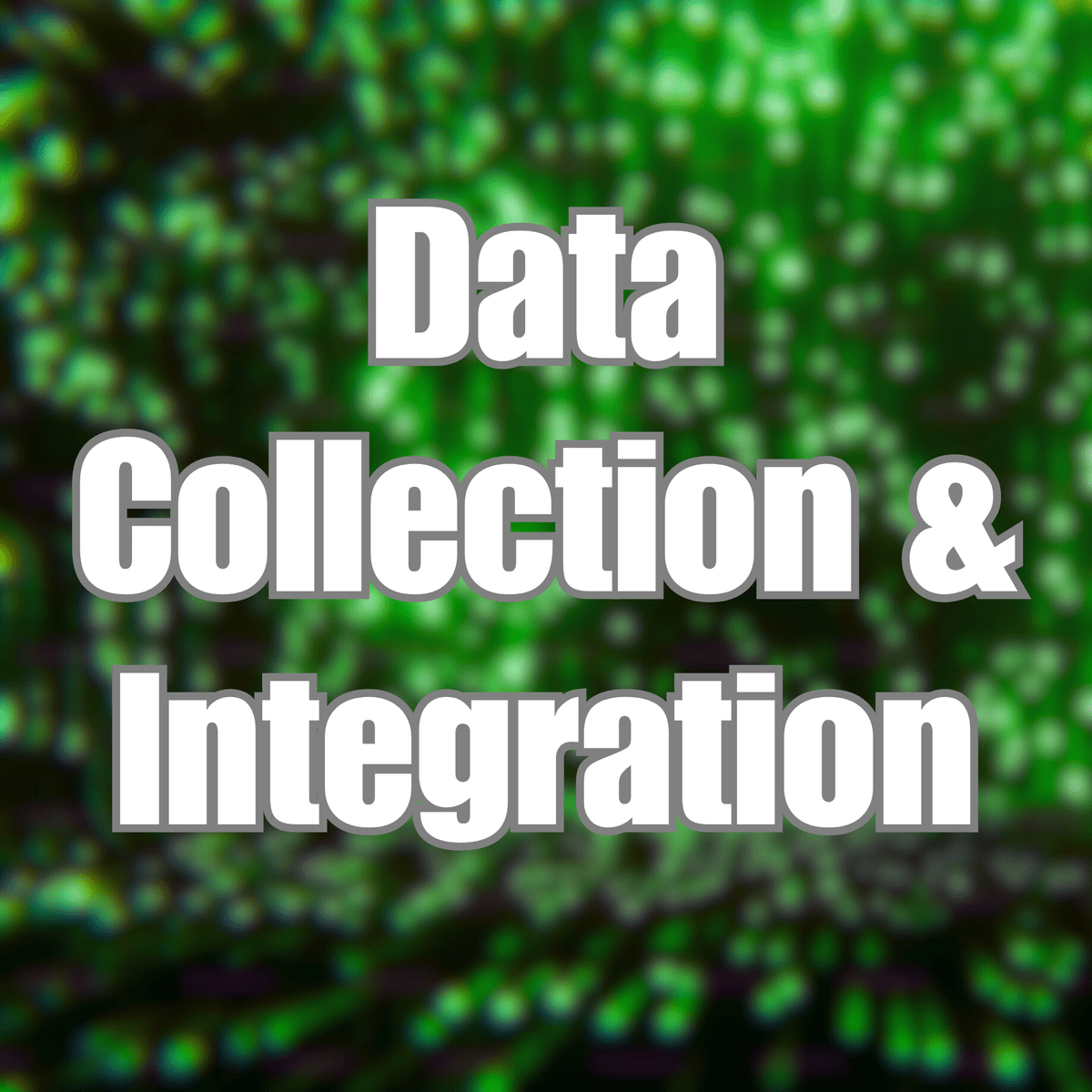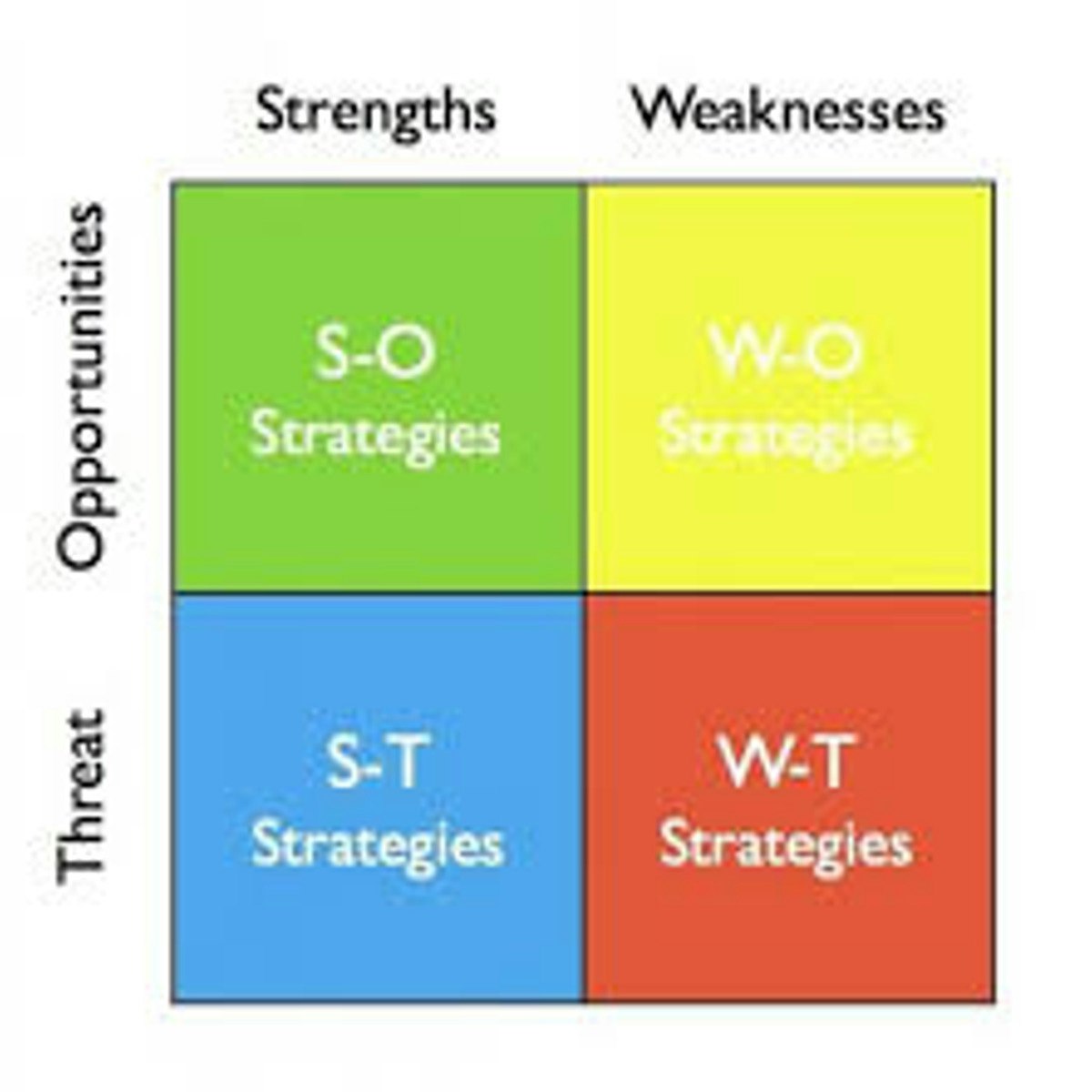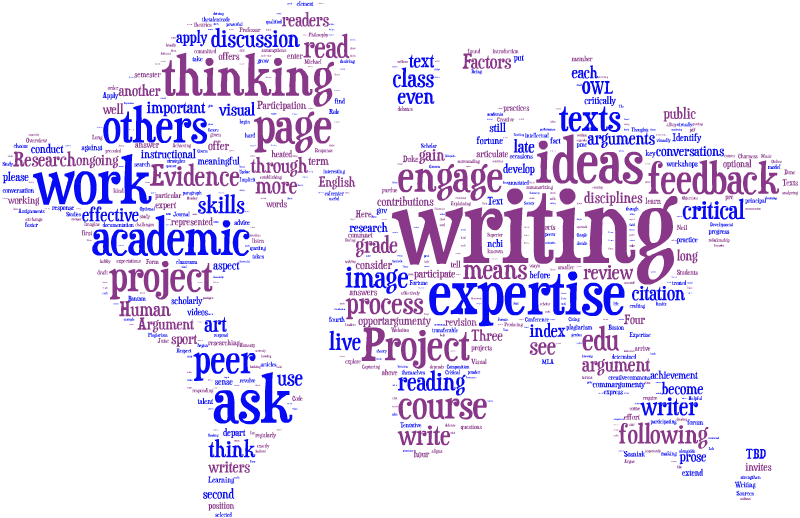Case study
Case Study
A case study is an in-depth, detailed examination of a particular instance or event, often referred to as the "case." It involves exploring a real-life phenomenon within its natural setting, using multiple sources of evidence. Whether analyzing a specific company's strategic decisions, a patient's medical history, a community's response to a natural disaster, or a particular educational program's effectiveness, the case study method allows for a rich, holistic understanding of complex issues.
The power of the case study lies in its ability to illuminate practical problems and theoretical concepts through tangible examples. It provides a narrative structure that can make intricate subjects more accessible and relatable. For those exploring different fields or career paths, understanding how case studies are constructed and utilized can offer valuable insights into problem-solving, critical thinking, and evidence-based decision-making across numerous disciplines.
Introduction to Case Study
What is a Case Study?
At its core, a case study is a research methodology focused on intensely investigating a single individual, group, event, decision, period, policy, institution, or other system that is studied holistically by one or more methods. The case is explored within its real-life context, especially when the boundaries between the phenomenon and its context are not clearly evident. Think of it as a deep dive into a specific situation to understand not just what happened, but how and why it happened.
The primary purpose isn't necessarily to generalize findings to a broader population in the way quantitative studies might aim to. Instead, case studies excel at providing rich, contextualized understanding. They allow researchers and practitioners to explore complex interactions, processes, and outcomes in detail, generating insights that might be missed by broader surveys or experiments. This depth makes them invaluable for exploring nuances and developing hypotheses for further investigation.
Consider a business attempting to understand why a particular product launch succeeded while another failed. A case study approach would involve examining multiple facets: the marketing strategies, the team dynamics, customer feedback, competitor actions, and market conditions surrounding each launch. By analyzing these elements together, the business can gain a comprehensive picture and derive practical lessons.
Origins and Evolution
The roots of the case study method can be traced back to the early 20th century, emerging across various fields almost simultaneously. In medicine, physicians documented detailed patient histories to understand diseases. Sociologists at the University of Chicago used case studies to explore urban life, communities, and social problems, producing seminal works on immigration and neighborhood dynamics. Anthropologists, similarly, relied on detailed ethnographic accounts of specific cultures or communities.
Business schools, notably Harvard Business School, pioneered the use of case studies as a pedagogical tool in the 1920s. They recognized that presenting students with real-world business dilemmas encouraged critical thinking, decision-making under uncertainty, and the application of theoretical concepts to practical situations. This "case method" remains a cornerstone of business education globally.
Over time, the methodology has become more formalized, with researchers developing systematic approaches to design, data collection, and analysis. Figures like Robert K. Yin and Robert E. Stake have contributed significantly to establishing rigorous frameworks for conducting case study research, enhancing its credibility and applicability across the social sciences, education, public administration, and beyond.
Where Case Studies Shine
The versatility of the case study makes it applicable across a vast range of industries and academic disciplines. In Business and Management, they are indispensable for analyzing corporate strategy, organizational behavior, marketing campaigns, and operational challenges. Law schools use legal cases to teach principles and reasoning. Medical professionals rely on patient cases for diagnosis, treatment planning, and training.
In the social sciences, case studies are crucial for understanding political systems, social movements, community development, and policy implementation. Education researchers use them to examine teaching methods, school reforms, and student experiences. Engineering and urban planning also utilize case studies to analyze project successes and failures, infrastructure development, and design processes.
Essentially, any field that deals with complex, real-world situations where context is crucial can benefit from the case study approach. Its strength lies in its ability to handle situations where variables are numerous and intertwined, offering a depth of understanding that other methods might struggle to achieve.
Role in Research and Practice
In academic research, case studies serve multiple functions. They can be used to explore new phenomena, generate hypotheses, test existing theories in real-world settings, and provide rich descriptions of complex processes. They are particularly valuable in the early stages of research on a topic or when studying rare or unique events where large sample sizes are impossible.
Professionally, case studies are vital for decision-making and problem-solving. Consultants use case analysis to understand client challenges and propose solutions. Policymakers examine case studies of interventions elsewhere to inform local decisions. Managers study past business cases to learn from successes and failures. The ability to dissect a complex situation, identify key factors, weigh evidence, and draw conclusions is a highly valued skill in many professional roles.
Furthermore, case studies serve as powerful learning tools. Whether in a classroom, a training workshop, or through self-study, engaging with cases helps individuals develop analytical skills, hone judgment, and learn to apply theoretical knowledge to practical scenarios. They bridge the gap between theory and practice, preparing individuals for the complexities they will encounter in their chosen fields.
Types of Case Study Designs
Exploring, Explaining, and Describing
Case studies can be broadly categorized based on their primary objective. Exploratory case studies are often undertaken when a research area is new or poorly understood. The goal is to scope out the key issues, variables, and potential research questions for future investigation. Think of it as mapping uncharted territory. For example, an exploratory case study might examine the initial experiences of a company adopting a novel technology.
Explanatory case studies aim to answer "how" or "why" questions. They seek to explain the causal links in real-life interventions or phenomena that are too complex for survey or experimental strategies. For instance, an explanatory case study might investigate why a specific government policy succeeded in one city but failed in another, looking for the underlying mechanisms and contextual factors.
Descriptive case studies provide a rich, detailed account of a phenomenon within its context. The objective is to paint a comprehensive picture of the case. While they might touch upon "why" questions, the main focus is on thoroughly describing the "what" and "how." An example could be a detailed description of the organizational culture within a specific non-profit organization.
These books offer foundational knowledge on designing various types of case studies and understanding their distinct purposes.
Single vs. Multiple Cases
Researchers must decide whether to focus on a single case or examine multiple cases. A single-case design is appropriate when the case represents a critical test of an existing theory, is a rare or unique circumstance, or serves a revelatory purpose (illuminating a previously inaccessible phenomenon). It allows for great depth and detail but may face challenges regarding external validity or generalizability.
Multiple-case designs involve studying two or more cases. This approach allows for comparison across cases, potentially strengthening the robustness and generalizability of findings. Researchers look for patterns (replications) across cases – either literal replications (where similar results are predicted) or theoretical replications (where contrasting results are predicted based on theory). While potentially less deep than a single-case study, multiple-case designs often provide more compelling evidence.
The choice between single and multiple cases depends heavily on the research question and the phenomenon being studied. Both designs require careful justification and clear criteria for case selection to ensure the study's rigor and relevance.
Studying Change Over Time
Longitudinal case studies involve collecting data from the case or cases over an extended period. This design is particularly useful for understanding processes, changes, and development over time. For example, a researcher might study a school implementing a new curriculum over several years, tracking its implementation, challenges, and outcomes as they unfold.
Longitudinal designs allow researchers to observe dynamics and causal processes more directly than a snapshot-in-time study. They can capture how events evolve, how decisions made at one point impact later stages, and how context shifts influence the case. This requires significant time and resources but can yield incredibly rich insights into complex, evolving phenomena.
Challenges include maintaining consistent data collection methods over time, managing large amounts of data, and potential participant attrition. However, the ability to track development and change makes longitudinal case studies invaluable for understanding dynamic systems in fields like organizational change, policy implementation, and individual development.
Comparing Across Contexts
Comparative case study frameworks explicitly involve selecting cases based on specific dimensions to facilitate comparison. The goal is often to understand how variations in context influence outcomes or processes. For example, a study might compare the implementation of a public health program in different countries or contrast the strategies of successful and unsuccessful companies within the same industry.
By systematically comparing cases that differ along key variables (while potentially being similar in others), researchers can isolate factors that contribute to different results. This approach enhances the analytical power of the study and can lead to more nuanced theoretical understanding. It requires careful case selection to ensure meaningful comparisons can be made.
Comparative designs are common in political science (comparing political systems), sociology (comparing communities or social groups), and business (comparing firms or markets). They bridge the gap between the depth of a single case and the breadth of large-N quantitative studies.
The Craft of Case Study Methodology
Gathering Evidence
A hallmark of strong case study research is the use of multiple sources of evidence. Relying on a single source can lead to biased or incomplete findings. Common data collection techniques include interviews (structured, semi-structured, or unstructured), direct observation (participant or non-participant), archival records (public records, organizational documents, meeting minutes), physical artifacts, and questionnaires or surveys tailored to the case context.
Interviews provide insights into perspectives, beliefs, and experiences. Observations capture behavior and interactions in their natural setting. Archival records offer historical context and factual grounding. Each source has strengths and weaknesses, and using them in combination allows researchers to build a more comprehensive and validated understanding of the case.
The process requires careful planning regarding who to interview, what to observe, which documents are relevant, and how to record the data systematically. Qualitative data analysis skills are essential for making sense of the often rich, textual, and observational data collected.
These resources delve into the practicalities of collecting and analyzing qualitative data, which forms the backbone of most case study research.
Ensuring Rigor Through Triangulation
Triangulation is a key strategy for enhancing the validity and reliability of case study findings. It involves using multiple sources of data, multiple investigators, multiple theoretical perspectives, or multiple methods to cross-check findings. If different sources or methods converge on the same conclusion, confidence in that conclusion increases.
For example, a finding suggested by interviews could be corroborated by observations and supported by documentary evidence. If discrepancies arise, they prompt further investigation to understand the reasons, leading to a more nuanced and accurate picture. Triangulation helps mitigate potential biases associated with any single data source, investigator, or method.
This process isn't just about confirmation; it's also about deepening understanding. Different data types can illuminate different facets of the case, contributing to a more holistic view. Effective triangulation requires careful planning during the research design phase to ensure appropriate data sources and methods are incorporated.
Making Sense of Data
Analyzing case study data, which is often qualitative and voluminous, requires systematic approaches. Common analytical frameworks include pattern matching, where observed patterns in the case data are compared with predicted patterns based on theory or rival explanations. If the patterns match, it strengthens the theoretical conclusions.
Explanation building is an iterative process used primarily in explanatory case studies. It involves constructing an explanation about the case by analyzing the data, refining the explanation based on further evidence, and comparing it to alternative explanations. This often involves tracing processes and identifying causal links over time.
Other techniques include time-series analysis (for longitudinal data) and logic models (mapping inputs, activities, outputs, and outcomes). The goal is to move beyond simple description to develop insightful interpretations and explanations grounded firmly in the evidence. Utilizing qualitative data analysis software can aid in managing and coding large amounts of text or observational data.
These books provide deeper insights into the art and science of conducting rigorous case study research, including analysis techniques.
Building Trustworthy Findings
Ensuring the quality of case study research involves addressing issues of validity and reliability, although these concepts are sometimes interpreted differently than in quantitative research. Construct validity refers to identifying correct operational measures for the concepts being studied – essentially, ensuring you're measuring what you intend to measure. Using multiple sources of evidence and having key informants review draft case study reports can enhance construct validity.
Internal validity (primarily for explanatory studies) concerns establishing causal relationships and ensuring alternative explanations are considered and ruled out. Pattern matching, explanation building, and addressing rival hypotheses contribute here. External validity relates to the generalizability of findings beyond the immediate case. While case studies don't aim for statistical generalization, analytical generalization – generalizing findings to theoretical propositions – is often a goal, especially in multiple-case studies.
Reliability refers to demonstrating that the study's operations – such as data collection procedures – can be repeated with the same results. Using a case study protocol (a detailed plan of procedures) and maintaining a case study database (an organized collection of evidence) enhances reliability. Addressing these aspects systematically helps build confidence in the study's findings and conclusions.
Case Studies in the Professional World
Shaping Business Strategy
In the business world, case studies are fundamental tools for developing and refining strategy. Analyzing the successes and failures of other companies (or one's own past initiatives) provides crucial insights into market dynamics, competitive positioning, and effective strategic choices. Business leaders often study cases involving market entry, product launches, mergers and acquisitions, or responses to disruptive technologies.
Frameworks like SWOT (Strengths, Weaknesses, Opportunities, Threats) analysis or Porter's Five Forces are often applied to business cases to structure the analysis. By dissecting a company's situation, its decisions, and the outcomes, managers and analysts can identify patterns, learn best practices, and avoid potential pitfalls. This analysis informs future strategic planning and helps organizations adapt to changing environments.
Studying strategy through cases develops critical thinking and the ability to make decisions with incomplete information, mirroring the challenges faced by real-world executives. Many consulting firms use case interviews, which require candidates to analyze a business problem scenario, specifically to assess these skills.
These courses provide frameworks and capstone experiences often used in analyzing business cases for strategic purposes.
Understanding Markets and Customers
Market research frequently employs case study approaches, especially for understanding complex customer behaviors, niche markets, or the adoption of new products. Instead of broad surveys, a company might conduct in-depth case studies of a few representative customers or user groups to understand their needs, motivations, and experiences in detail.
This qualitative insight can be invaluable for product development, user experience (UX) design, and crafting targeted marketing messages. For example, a software company might conduct case studies of early adopters to understand how they integrate the product into their workflow and identify usability issues. Similarly, a consumer goods company might study the purchasing habits and lifestyle of a specific demographic segment through detailed cases.
These deep dives provide context and nuance that quantitative data alone might miss. Understanding the "why" behind customer behavior, derived from detailed cases, can lead to more effective marketing strategies and products that better meet market needs. You can explore related topics further within Marketing.
This capstone course allows learners to apply marketing concepts, often involving case-like analysis of a product's journey through the marketing mix.
Navigating Organizational Change
Managing change within organizations is notoriously difficult. Case studies of past change initiatives – both successful and unsuccessful – provide valuable lessons for leaders and consultants. Analyzing cases can illuminate common challenges, effective communication strategies, methods for overcoming resistance, and the importance of leadership during transitions.
These cases might detail mergers, restructuring efforts, implementations of new technologies, or shifts in organizational culture. By examining the process, the stakeholder reactions, and the outcomes, organizations can develop more effective change management plans. They learn what worked, what didn't, and why, within specific organizational contexts.
Practitioners in organizational development and human resources often rely on case studies for training and strategy development. Understanding the complexities of human behavior and organizational dynamics through real examples helps build the skills needed to guide organizations through turbulent periods.
This capstone project often involves analyzing an organizational case study to apply leadership principles.
Assessing and Managing Risks
Case studies are also employed in risk assessment and mitigation, particularly for complex, high-impact events. Industries like finance, insurance, engineering, and public safety analyze past failures or near-misses to understand vulnerabilities and improve safety protocols or financial controls. For example, analyzing the case of a major industrial accident can lead to improved engineering standards and operational procedures.
Financial institutions study cases of market crashes or corporate fraud to refine risk models and regulatory compliance. Public health officials might analyze the case of an outbreak to improve future response strategies. By dissecting the sequence of events, contributing factors, and consequences in specific instances, organizations can identify potential risks in their own operations and develop more robust mitigation strategies.
This detailed analysis of specific failure events provides concrete lessons that are often more impactful than abstract risk warnings. It helps translate theoretical risk concepts into practical preventative measures, grounded in real-world experience.
This book touches upon sustainability solutions, which often involves assessing risks and analyzing case studies of environmental or social challenges.
Educational Pathways for Case Study Expertise
Foundational Learning
Exposure to case studies often begins at the undergraduate level, particularly in fields like business, law, political science, sociology, and sometimes even the humanities and sciences. Introductory courses might use short cases to illustrate concepts or assign case analyses as coursework. The focus at this stage is typically on developing basic analytical skills: identifying key issues, applying theoretical concepts, and structuring an argument based on case evidence.
Courses in research methods might introduce the case study as a formal methodology, covering basic design principles and data collection techniques. Strong writing and critical thinking skills are essential, and courses focusing on these foundational abilities provide crucial support for engaging effectively with case-based learning.
Developing a solid foundation in analytical reading and argumentative writing is key. Even if not explicitly focused on case studies, courses that hone these abilities prepare students for the demands of case analysis later in their academic or professional careers.
A strong foundation in writing is essential for articulating case study analyses effectively.
Advanced Application in Business
Master of Business Administration (MBA) programs are perhaps most famous for their intensive use of the case method. At institutions like Harvard Business School, the case method is the primary mode of instruction. Students are presented with detailed cases describing real business situations and are expected to analyze the problem, propose solutions, and defend their reasoning in class discussions.
This immersive approach aims to simulate the decision-making environment faced by managers. It forces students to grapple with ambiguity, weigh competing priorities, apply frameworks learned in finance, marketing, operations, and strategy, and articulate their views persuasively. The emphasis is less on finding the "right" answer and more on the process of analysis and critical debate.
Beyond the MBA, many graduate programs in public policy, public health, and administration also utilize case studies extensively to bridge theory and practice. The goal is to develop practical judgment and decision-making skills relevant to professional roles.
Deep Dive in Academia
For those pursuing doctoral studies (Ph.D.), the case study often becomes a formal research methodology for dissertation work, especially in the social sciences, education, and applied professional fields. Doctoral candidates learn advanced case study design, sophisticated data analysis techniques (including qualitative data analysis software), and the theoretical underpinnings of the methodology.
Doctoral research requires a high level of rigor in justifying the case selection, detailing the data collection procedures (often involving extensive fieldwork), and employing systematic analytical strategies like pattern matching or explanation building. The goal is to contribute original knowledge to the field, often by using case studies to test or refine existing theories or to develop new theoretical insights based on in-depth empirical investigation.
Training includes understanding epistemological debates surrounding case study research and mastering techniques to ensure the trustworthiness (validity and reliability) of the findings. Researchers learn to craft compelling narratives that integrate rich empirical detail with theoretical analysis.
These books are often central to doctoral-level training in research design and qualitative methods, including case studies.
Hands-on Practice
Beyond formal coursework, practical experience with case studies can be gained through case competitions and simulation exercises. Many universities and professional organizations host competitions where student teams analyze a complex case within a tight timeframe and present their recommendations to a panel of judges (often industry professionals).
Simulations, increasingly available online, provide interactive environments where learners make decisions within a case scenario and see the consequences unfold. These activities offer valuable opportunities to apply analytical frameworks, work collaboratively under pressure, and receive feedback on decision-making skills.
Capstone projects in many degree programs, like the ones listed below, often require students to conduct an independent analysis, sometimes resembling a small-scale case study, integrating knowledge gained throughout their studies.
Capstone projects often require students to apply their learning to a comprehensive case or problem, honing practical analysis skills.
Learning Case Study Skills Online
Structured Online Learning
The rise of online education provides numerous avenues for developing case study analysis skills. Many platforms offer courses specifically on business strategy, market analysis, research methods, and critical thinking, often incorporating case examples or requiring case-based assignments. Learners can find structured paths that build foundational knowledge before moving to more complex applications.
Online courses allow for flexibility, enabling professionals to upskill or career changers to explore new fields at their own pace. Look for courses that not only present frameworks but also provide opportunities to apply them to realistic scenarios. Platforms like OpenCourser aggregate offerings from various providers, making it easier to find relevant courses across different disciplines like Business or Social Sciences.
Completing a series of related courses or a specialization can provide a comprehensive understanding. Ensure you explore course syllabi and reviews to find programs that emphasize analytical skill development and practical application through case work.
Interactive Learning Environments
Some online platforms go beyond traditional course formats to offer interactive case simulations. These tools place the learner in a dynamic scenario where they must analyze unfolding information, make decisions, and see the simulated results. This provides a safe space to practice decision-making under pressure and learn from mistakes without real-world consequences.
These simulations can range from business strategy games to public health crisis responses or project management scenarios. They offer an engaging way to develop practical judgment and understand the complexities of real-world situations. While not a replacement for analyzing detailed written cases, simulations provide a complementary, hands-on learning experience.
Exploring platforms that specialize in business simulations or checking within broader online course providers can uncover these interactive learning opportunities. They are particularly valuable for translating theoretical knowledge into actionable skills.
Certifications and Credentials
While a specific "Case Study Analyst" certification is uncommon, numerous certifications in related fields heavily rely on or benefit from case study skills. Certifications in business analysis, project management, market research, or specific consulting areas often involve demonstrating analytical and problem-solving abilities frequently honed through case work.
Some online course providers offer certificates upon completion of specializations that involve significant case analysis or capstone projects. These can be valuable additions to a resume or LinkedIn profile, signaling a demonstrated ability to apply knowledge practically. Check the OpenCourser Learner's Guide for tips on how to leverage online course certificates effectively.
Focus on acquiring skills and demonstrating competence through projects rather than solely collecting certificates. However, a relevant certificate from a reputable provider can help validate your expertise in areas where case analysis is a key component.
Demonstrating Your Skills
Actively applying your skills is crucial. One way to do this is by building a portfolio of case analyses or projects. This could involve analyzing publicly available business cases, dissecting historical events, or even conducting a small-scale case study on a topic of personal interest. Documenting your analysis, methodology (if applicable), and conclusions creates tangible evidence of your abilities.
Participating in online forums, discussion groups, or even contributing analyses to blogs can also showcase your skills. For those interested in research, presenting findings from a case study project at a conference (even a student conference) is a valuable experience. Platforms like OpenCourser allow you to save courses and build learning lists, which can be curated and shared to demonstrate your learning path.
Employers, especially in fields like consulting and analysis, often value demonstrated analytical capabilities over purely academic credentials. A portfolio showcasing your ability to dissect complex situations using a case study approach can be a powerful asset in a job search.
Even courses focused on specific domains, like HVAC design or sponsorship, may incorporate case studies to illustrate practical application.
Careers Leveraging Case Study Skills
The Consulting Arena
Management consulting is perhaps the field most synonymous with case studies, particularly during the hiring process. Consulting firms use "case interviews" extensively to assess candidates' analytical, problem-solving, communication, and structuring skills. Candidates are presented with a business problem and must ask clarifying questions, identify key issues, propose analytical frameworks, and develop recommendations, all within a structured conversation.
Beyond the interview, the day-to-day work of consultants often involves deep dives into client organizations and their challenges, resembling applied case study work. Consultants gather data through interviews, workshops, and document analysis, diagnose problems, benchmark against industry best practices (often drawn from other cases), and develop strategic solutions tailored to the client's specific context. Strong analytical and synthesis skills are paramount.
The ability to quickly understand complex situations, structure ambiguous problems, and derive data-driven insights – skills honed by case study practice – is essential for success in management consulting. Salaries in consulting are often high, reflecting the demanding nature of the work and the value placed on these analytical abilities.
Informing Public Decisions
Policy analysts and researchers in government agencies, think tanks, and non-profit organizations frequently use case study approaches. They might analyze the implementation and effectiveness of specific policies or programs in particular locations, compare policy outcomes across different jurisdictions, or conduct in-depth studies of specific social problems to inform policy design.
For example, a policy analyst might study the case of a successful educational reform in one school district to understand the key factors contributing to its success and assess its potential applicability elsewhere. This involves gathering qualitative and quantitative data, understanding the local context, and drawing nuanced conclusions about policy effectiveness.
Strong analytical and writing skills are crucial for communicating findings to policymakers and stakeholders. The ability to synthesize complex information from multiple sources and present clear, evidence-based recommendations is highly valued in these roles.
Understanding User Needs
In the field of User Experience (UX) research and design, understanding user behavior in context is critical. While usability testing and surveys are common, in-depth case studies of individual users or user groups can provide rich insights into how people interact with products or services in their natural environments.
UX researchers might conduct observational studies, diary studies, or in-depth interviews – all components of case study methodology – to understand user workflows, pain points, and unmet needs. These qualitative insights inform the design of more intuitive, effective, and user-friendly products and interfaces.
The ability to empathize with users, observe carefully, and synthesize qualitative data into actionable design recommendations is key. Case study thinking helps UX professionals move beyond surface-level feedback to understand the deeper context of user behavior.
Career Growth Trajectories
Expertise in case analysis can be a springboard for career growth across various fields. Entry-level roles like research assistant, junior analyst, or associate consultant often involve supporting senior staff in data gathering and analysis for case studies or projects.
With experience, individuals can progress to roles where they lead analyses, manage projects, develop strategies, and present findings to senior leadership or clients. Strong case analysis skills can lead to positions such as senior analyst, consultant, project manager, policy advisor, market research manager, or strategist. According to the U.S. Bureau of Labor Statistics, employment for management analysts (a common role involving case-like analysis) is projected to grow faster than average.
The core skills developed through case study work – critical thinking, structured analysis, evidence-based reasoning, and communication – are transferable and highly valued across many industries, providing a solid foundation for long-term career advancement.
Ethical Practice in Case Study Research
Protecting Participants
When case studies involve human participants, protecting their confidentiality and privacy is paramount. Researchers must take steps to anonymize data whenever possible, removing names and other identifying information from reports and publications. This might involve using pseudonyms for individuals and organizations or aggregating data to obscure specific details.
Secure data storage and handling procedures are essential to prevent unauthorized access. Researchers need to be clear with participants about how their data will be used and the limits of confidentiality (e.g., if illegal activities are disclosed).
Balancing the need for rich descriptive detail with the obligation to protect participants can be challenging. Researchers must make careful judgments about what information is essential to report and what can be omitted or disguised without compromising the study's integrity.
Respecting Autonomy
Informed consent is a cornerstone of ethical research involving people. Participants must voluntarily agree to take part in the study after being fully informed about its purpose, procedures, potential risks and benefits, and their right to withdraw at any time without penalty. This information should be provided in clear, understandable language.
For case studies involving organizations or communities, obtaining consent might involve multiple levels – from organizational leaders to individual employees or residents. Researchers must navigate these dynamics carefully, ensuring that participation is genuinely voluntary and not coerced.
Special considerations apply when working with vulnerable populations (e.g., children, patients), where additional safeguards may be needed to ensure their rights and welfare are protected. Ethical review boards, such as Institutional Review Boards (IRBs) found at universities like Harvard University, play a critical role in overseeing these processes.
Navigating Cultural Differences
When conducting case studies across different cultural contexts, researchers must demonstrate cultural sensitivity and awareness. This involves understanding local norms, values, communication styles, and power dynamics. What might be an acceptable research practice in one culture could be inappropriate or offensive in another.
Researchers should strive to collaborate with local partners or informants, learn about the cultural context beforehand, and be mindful of potential biases in their own interpretations. Language barriers must be addressed thoughtfully, often requiring skilled interpreters who understand both the language and the cultural nuances.
Failure to navigate cultural differences respectfully can compromise the quality of the data, damage relationships with the community or organization being studied, and lead to unethical research practices. Interdisciplinary research often requires navigating these complexities.
This book explores the challenges and approaches in interdisciplinary research, where cultural sensitivity is often key.
Handling Data Responsibly
Ethical considerations extend to data ownership, analysis, and publication. Clarity is needed regarding who owns the data collected (the researcher, the institution, the funding body, or the participating organization) and how it can be used in the future. Agreements should ideally be established before data collection begins.
Researchers have an ethical obligation to represent their findings accurately and avoid misinterpretation or fabrication. This includes acknowledging limitations of the study and presenting alternative perspectives or contradictory evidence fairly. Decisions about authorship and publication credits should also be handled transparently and equitably among research team members.
Sharing data for verification or secondary analysis is often encouraged, but this must be balanced with confidentiality agreements and participant privacy. Responsible data management and ethical reporting are crucial for maintaining the integrity of case study research and the trust placed in researchers.
These books delve into evaluating research, which implicitly covers ethical considerations in data handling and reporting.
The Evolving Landscape of Case Studies
Adapting to Big Data
The era of big data presents both challenges and opportunities for traditional case study methods. While case studies typically focus on in-depth, qualitative data, the availability of large datasets offers new avenues for contextualizing cases or even integrating quantitative analysis within a case study framework. Researchers might use large-N data to select representative or critical cases for in-depth study.
Conversely, insights generated from rich case studies can help researchers make sense of patterns observed in big data or formulate hypotheses for quantitative testing. The detailed understanding provided by a case study can illuminate the mechanisms behind correlations found in large datasets.
The challenge lies in integrating different types of data and analytical approaches meaningfully. Methodologists are exploring ways to combine the depth of case studies with the breadth of big data analytics, creating richer and more robust research designs.
Technology's Role
Technological advancements are influencing how case studies are conducted and analyzed. AI-powered tools are emerging that can assist with analyzing large volumes of qualitative data (e.g., interview transcripts, documents), identifying patterns, and even generating initial summaries. While these tools cannot replace human interpretation and judgment, they can potentially accelerate the analysis process.
Digital platforms facilitate remote data collection through video interviews and online document sharing, making geographically dispersed cases more feasible. Visualization tools can help researchers map complex relationships and present findings in more engaging ways. Technology enables new forms of data capture, such as analyzing online interactions or using sensors to gather observational data.
Researchers need to critically evaluate how these tools can enhance their work while being mindful of potential biases embedded in algorithms and the ethical implications of using new technologies for data collection and analysis.
A Global Perspective
Globalization means that the phenomena studied through case studies increasingly cross national borders. Research might involve multinational corporations, international policy initiatives, global social movements, or cross-cultural comparisons. This requires researchers to navigate diverse contexts, languages, and institutional environments.
Conducting international or global case studies presents logistical and methodological challenges but also offers significant opportunities to understand complex, interconnected global systems. It pushes researchers to develop broader theoretical frameworks that can account for variation across different national and cultural settings.
The demand for professionals who can analyze complex global issues using case study approaches is likely to grow as organizations and governments grapple with interconnected challenges ranging from international business strategy to global health crises and climate change.
Combining Methodologies
There is a growing trend towards integrating case studies within broader mixed-methods research designs. This involves combining the in-depth, qualitative insights from case studies with the generalizability and statistical power of quantitative methods (like surveys or experiments) within a single study.
For example, a study might begin with exploratory case studies to develop hypotheses and refine survey instruments, followed by a large-scale survey. Alternatively, quantitative findings might be followed up with case studies to explore outliers or understand the mechanisms behind statistical relationships in more detail. This sequential or concurrent mixing of methods can lead to more comprehensive and robust findings than either approach could achieve alone.
Mastering mixed-methods research requires understanding the strengths and weaknesses of both qualitative (including case study) and quantitative approaches and how they can be combined synergistically. This represents an exciting frontier for research methodology across many fields.
Frequently Asked Questions about Case Studies
What skills are crucial for working with case studies?
Several skills are essential. Strong analytical and critical thinking abilities are paramount for dissecting complex situations, identifying key issues, and evaluating evidence. Excellent written and verbal communication skills are needed to articulate analyses clearly and persuasively. Research skills, including data collection (interviews, observation, document analysis) and qualitative data analysis, are often required, especially for those conducting original case study research.
Problem-solving skills are vital, particularly in applied settings like consulting or policy analysis, where the goal is to develop solutions based on case analysis. Additionally, attention to detail, organizational skills (for managing complex information), and the ability to work with ambiguity are highly valued. Depending on the field, specific domain knowledge (e.g., business acumen, understanding of policy processes) is also necessary.
Many online courses, such as those focusing on strategy or research methods, help develop these core competencies.
What entry-level jobs involve case analysis?
Several entry-level positions utilize case analysis skills. Roles like Research Assistant or Junior Analyst in market research firms, consulting companies, think tanks, or academic settings often involve gathering and analyzing data for case studies or projects. Business Analyst roles may require analyzing business processes or problems, sometimes using case-like approaches.
In consulting, entry-level Associate or Analyst positions heavily involve working on client cases under supervision. Some policy-focused roles in government or non-profits might involve analyzing case studies of programs or interventions. Even roles in marketing or product development might involve analyzing customer cases or market scenarios.
These positions typically provide opportunities to learn and apply analytical frameworks while contributing to larger projects, building the experience needed for more senior roles.
How can I shift from academic research to applied case work?
Transitioning from academic case study research to applied roles (like consulting or policy analysis) involves highlighting the transferable skills gained through research. Emphasize your analytical abilities, problem-structuring skills, data synthesis capabilities, and experience managing complex information. Frame your research projects in terms of the problems they addressed and the insights generated, using business- or policy-relevant language.
Networking is crucial. Connect with professionals in your target field, conduct informational interviews, and learn about the specific types of analytical challenges they face. Tailor your resume and cover letter to match the requirements of applied roles, focusing on results and practical skills rather than purely academic contributions. Consider internships, volunteer projects, or short-term contracts to gain relevant industry experience.
Practice articulating your research skills in the context of applied problems. For consulting, specific preparation for case interviews is essential, focusing on structured problem-solving frameworks commonly used in the industry.
Is there international demand for case study skills?
Yes, the skills associated with case study analysis – critical thinking, problem-solving, data synthesis, and communication – are highly valued globally across many sectors. Multinational corporations, international consulting firms, global NGOs, and intergovernmental organizations all require professionals who can analyze complex situations in diverse international contexts.
Fields like international business, international development, global health, and foreign policy heavily rely on individuals who can understand and analyze cross-border issues, often using comparative case study approaches. The ability to navigate cultural differences and understand varying institutional environments adds further value in international roles.
While specific job titles might vary, the underlying demand for strong analytical and problem-solving capabilities, honed through case study work, is robust in the global job market.
Do I need ongoing education in this field?
While a specific degree in "Case Studies" doesn't exist, continuous learning is beneficial. Methodologies evolve, new analytical tools emerge, and the contexts (business, social, political) you analyze are constantly changing. Staying updated on research methods, analytical frameworks, and developments within your specific field of application (e.g., business strategy, public policy, UX research) is important.
This might involve reading academic journals or industry publications, attending workshops or conferences, taking targeted online courses to acquire new skills (e.g., data visualization, specific analytical software), or pursuing advanced certifications in related areas. Lifelong learning helps maintain sharp analytical skills and ensures your approach remains relevant and effective.
Engaging with new cases and diverse perspectives also contributes to ongoing professional development, keeping your analytical abilities honed.
Will automation affect careers focused on case studies?
Automation and AI are likely to impact aspects of case study work, but they are unlikely to fully replace the core skills involved. AI tools may become increasingly helpful in processing large amounts of text data, identifying initial patterns, or summarizing information, potentially automating some of the more routine aspects of data analysis.
However, the core strengths of the case study approach lie in deep contextual understanding, nuanced interpretation, critical judgment, ethical reasoning, and synthesizing diverse forms of evidence – abilities that remain challenging for current AI. Skills like formulating insightful research questions, conducting sensitive interviews, interpreting complex social dynamics, and developing creative solutions based on holistic understanding will likely remain in high demand.
Professionals who can leverage AI tools to enhance their analysis while focusing on higher-order thinking, interpretation, and strategic insight will be best positioned. The emphasis may shift from manual data processing towards interpretation, critical evaluation, and applying insights in complex, real-world situations.
Understanding and utilizing the case study method offers a powerful lens for examining complex real-world issues. Whether applied in academic research, business strategy, policy development, or personal learning, the ability to conduct or analyze a case study fosters critical thinking, analytical rigor, and informed decision-making. For those exploring careers or seeking to deepen their understanding of various fields, engaging with case studies provides invaluable insights and develops highly transferable skills essential for navigating an increasingly complex world. Resources available through platforms like OpenCourser can help you find courses and materials to build your expertise in this versatile methodology.














